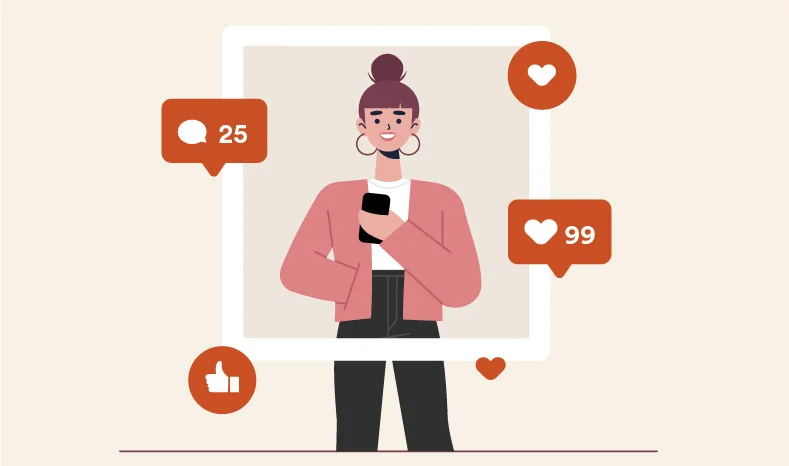Howdy! You know, in today’s hyper-competitive digital landscape, understanding your competitors and collaborating with the right influencers isn’t just a nice-to-have—it’s essential for survival. So, if you’re ready to outsmart your competition and skyrocket your brand’s visibility, okay, let’s dive in!
The Hidden Power of Influencer and Competitor Research
Before we get into the nitty-gritty, let’s talk about why influencer and competitor research is a game-changer for your business.
Why Influencer Research is Your Secret Weapon
Influencers hold sway over your target audience. According to a study by Influencer Marketing Hub, businesses are making $5.78 ROI for every dollar spent on influencer marketing. That’s some serious bang for your buck!
- Trust and Authenticity: Influencers have built-in trust with their followers.
- Niche Targeting: They can help you reach specific segments effectively.
- Content Creation: Collaborating with influencers brings fresh content to your brand.
Outshining Competitors Through Strategic Research
Competitor research isn’t about copying; it’s about understanding the landscape.
- Identifying Gaps: Spot what your competitors are missing.
- Benchmarking: Set performance standards based on industry leaders.
- Strategic Positioning: Differentiate your brand effectively.
According to Forrester Research, companies that leverage competitor insights outperform others by 20%.

Unlocking Influencer Gold: Advanced Strategies for Finding the Perfect Partners
Finding the right influencer isn’t just scrolling through Instagram. Let’s get strategic.
Utilizing Advanced Tools for Influencer Discovery
- Upfluence: An all-in-one influencer marketing platform that uses AI to match you with influencers based on your specific criteria.
- BuzzSumo: Analyze what content performs best for any topic or competitor and identify key influencers in your niche.
- Traackr: Provides in-depth analytics on influencer performance and audience demographics.
These tools help you go beyond surface-level metrics like follower count and focus on engagement rates, audience authenticity, and relevance.
Assessing Influencer Authenticity and Alignment
- Engagement Rates: Look for influencers with high likes and comments relative to their follower count.
- Content Quality: Ensure their style aligns with your brand’s voice.
- Audience Demographics: Verify that their followers match your target market.
According to Social Media Today, misaligned influencer partnerships can lead to wasted resources and minimal ROI.
Decoding Your Competitors: Mastering Competitive Analysis
Understanding your competitors inside and out gives you a significant advantage.
Leveraging Competitive Intelligence Tools
- SEMrush: Analyze competitors’ keywords, backlinks, and advertising strategies.
- SimilarWeb: Gain insights into competitors’ website traffic sources and audience behavior.
- Ahrefs: Dive deep into competitors’ SEO strategies and content performance.
These tools provide actionable data to refine your marketing strategies.
Analyzing Competitor Content and Social Media Strategies
- Content Audit: What topics are they covering? How often do they post?
- Engagement Metrics: Which of their posts receive the most interaction?
- Platform Presence: On which platforms are they most active?
According to Content Marketing Institute, a thorough content audit of competitors can reveal gaps in the market that your brand can fill.

Crafting a Winning Strategy: Integrating Influencer and Competitor Insights
Now that you’ve gathered all this intel, let’s put it to work.
Developing a Unique Value Proposition
- Identify Gaps: Use competitor weaknesses to highlight your strengths.
- Innovate: Offer something your competitors don’t.
- Communicate Value: Clearly articulate why customers should choose you.
Building Authentic Influencer Relationships
- Personalized Outreach: Show that you’ve done your homework.
- Long-Term Partnerships: Focus on building relationships rather than one-off deals.
- Mutual Benefit: Ensure that collaborations are win-win.
HubSpot emphasizes the importance of genuine relationships in influencer marketing for sustained success.
Advanced Techniques: Monitoring and Adapting Your Strategy
The digital landscape is ever-changing. Stay ahead by continuously adapting.
Setting Up Alerts and Dashboards
- Google Alerts: Monitor mentions of your brand and competitors.
- Brandwatch: Gain real-time insights into market trends and consumer sentiment.
- Custom Dashboards: Use tools like Cyfe to create all-in-one dashboards.
Analyzing Data for Continuous Improvement
- KPIs: Define key performance indicators aligned with your goals.
- A/B Testing: Experiment with different strategies to see what works best.
- Feedback Loops: Use customer and influencer feedback to refine your approach.
McKinsey & Company suggests that data-driven companies are 23 times more likely to acquire customers.

Pitfalls to Avoid: Common Mistakes in Influencer and Competitor Research
Even the pros can slip up. Let’s make sure you don’t.
Relying Solely on Vanity Metrics
- Follower Count Isn’t Everything: Focus on engagement and relevance.
- Quality Over Quantity: A smaller, engaged audience is more valuable.
Ignoring Micro-Influencers
- High Engagement Rates: Micro-influencers often have more engaged audiences.
- Cost-Effective: They’re generally more affordable.
Forbes highlights how micro-influencers can be a powerful asset in your marketing arsenal.
Overlooking Indirect Competitors
- Expand Your Horizon: Don’t just focus on direct competitors.
- Innovate: Learn from companies outside your industry.
Future Trends: Staying Ahead in Influencer and Competitor Research
The only constant is change. Here’s what’s on the horizon.
The Rise of AI and Machine Learning
- Predictive Analytics: Tools like Crayon use AI to predict competitor moves.
- Automated Influencer Matching: AI algorithms can identify the best influencer matches faster.
The Growing Importance of Authenticity
- Genuine Content: Audiences crave real connections.
- Values Alignment: Consumers prefer brands that share their values.
According to Edelman’s Trust Barometer, 86% of consumers expect brands to take a stand on social issues.
Conclusion
By mastering influencer and competitor research, you’re not just keeping up with the competition—you’re setting the pace. Remember, the key is to stay curious, be strategic, and adapt quickly. The digital landscape waits for no one, but with these insights, you’re more than ready to take it by storm. Ready to put these strategies into action? Let’s get started!
FAQs
How often should I conduct influencer and competitor research? Great question! Ideally, you should have ongoing monitoring in place. However, a comprehensive review every quarter is recommended to stay updated with significant changes. Tools like Mention can help automate this process.
What’s the best way to approach influencers for collaboration? Personalization is key. Show genuine interest in their work and explain how a partnership would be mutually beneficial. Avoid generic messages. For more tips, check out Neil Patel’s guide.
Can small businesses benefit from influencer marketing and competitor research? Absolutely! In fact, small businesses can gain a competitive edge by leveraging micro-influencers and identifying niche market opportunities through competitor research. Buffer offers insights tailored for small enterprises.

